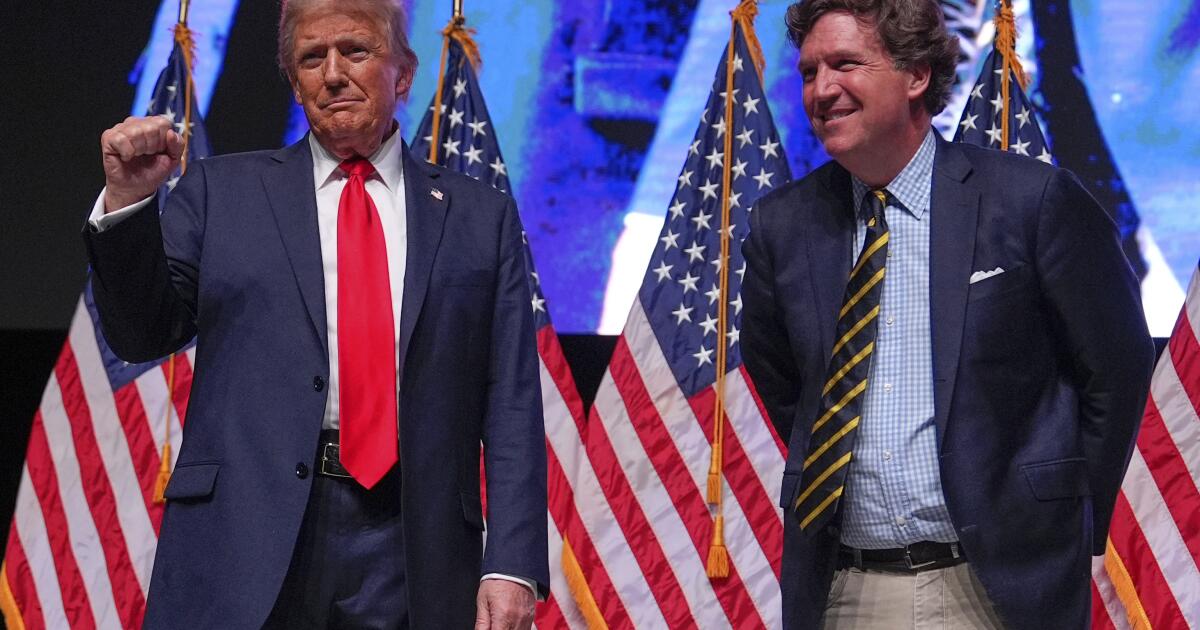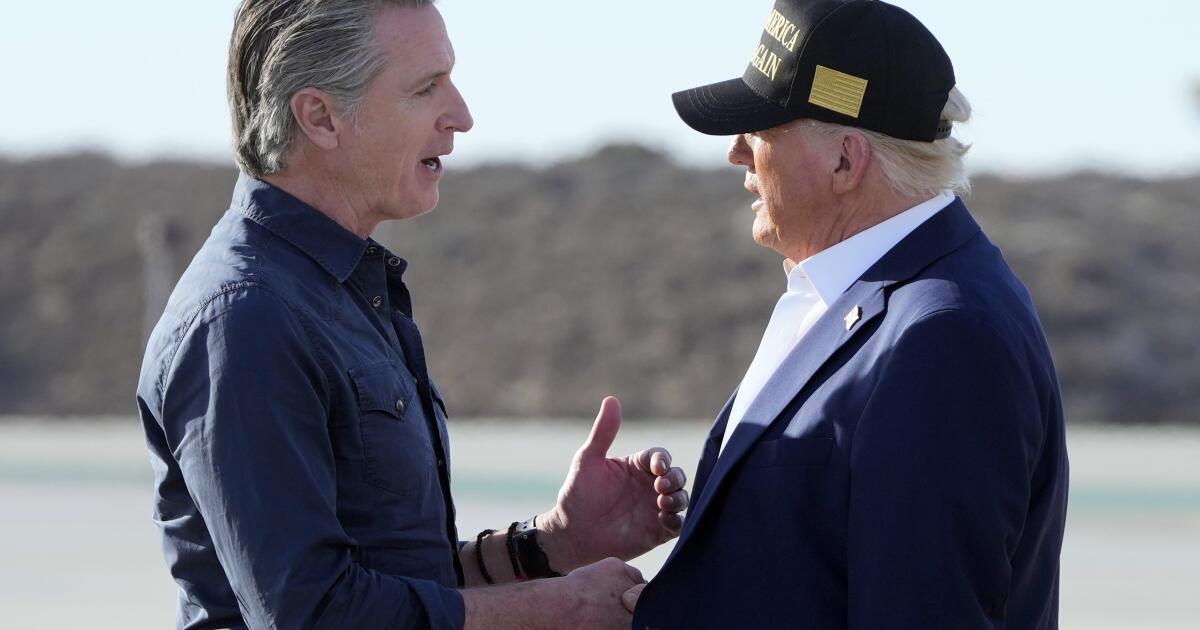Trump’s move against Iran may draw more criticism from MAGA’s anti-interventionists
President Trump’s decision to strike three nuclear sites in Iran will almost assuredly draw more criticism from some of his supporters, including high-profile backers who had said any such move would run counter to the anti-interventionism he promised to deliver.
The lead-up to the strike announced Saturday exposed fissures within Trump’s “Make America Great Again” base as some of that movement’s most vocal leaders, with large followings of their own, expressed deep concern about the prospect of U.S. involvement in the Israel-Iran war.
With the president barred from seeking a third term, what remains unknown is how long-lasting the schism could be for Trump and his current priorities, as well as the overall future of his “America First” movement.
Among the surrogates who spoke out against American involvement were former senior advisor Steve Bannon, Rep. Marjorie Taylor Greene (R-Ga.), commentator Tucker Carlson and Charlie Kirk, the founder of the conservative youth organization Turning Point. Part of their consternation was rooted in Trump’s own vocalized antipathy for what he and others have termed the “forever wars” fomented in previous administrations.
As the possibility of military action neared, some of those voices tamped down their rhetoric. According to Trump, Carlson even called to “apologize.”
Here’s a look at what some of Trump’s biggest advocates had said about U.S. military involvement in Iran:
Steve Bannon
On Wednesday, Bannon, one of the top advisors in Trump’s 2016 campaign, told an audience in Washington that bitter feelings over Iraq were a driving force for Trump’s first presidential candidacy and the MAGA movement. “One of the core tenets is no forever wars,” Bannon said.
But the longtime Trump ally, who served a four-month sentence for defying a subpoena in the congressional investigation into the U.S. Capitol attack on Jan. 6, 2021, went on to suggest that Trump will maintain loyalty from his base no matter what. On Wednesday, Bannon acknowledged that while he and others will argue against military intervention until the end, “the MAGA movement will back Trump.”
Ultimately, Bannon said that Trump would have to make the case to the American people if he wanted to get involved in Iran.
“We don’t like it. Maybe we hate it,” Bannon said, predicting what the MAGA response would be. “But, you know, we’ll get on board.”
Tucker Carlson
The commentator’s rhetoric toward Trump was increasingly critical. Carlson, who headlined large rallies with the Republican during the 2024 campaign, earlier this month suggested that the president’s posture was breaking his pledge to keep the U.S. out of new foreign entanglements. Trump clapped back at Carlson on social media, calling him “kooky.”
During an event at the White House on Wednesday, Trump said that Carlson had “called and apologized” for calling him out. Trump said Carlson “is a nice guy.”
Carlson’s conversation with Sen. Ted Cruz (R-Texas) that day laid bare the divides among many Republicans. The two sparred for two hours over a variety of issues, primarily about possible U.S. involvement in Iran. Carlson accused Cruz of placing too much emphasis on protecting Israel in his foreign policy worldview.
“You don’t know anything about Iran,” Carlson said to Cruz, after the senator said he didn’t know Iran’s population or its ethnic composition. “You’re a senator who’s calling for the overthrow of a government, and you don’t know anything about the country.”
Rep. Marjorie Taylor Greene
The Georgia Republican, who wore the signature red MAGA cap for Democratic President Biden’s State of the Union address in 2024, publicly sided with Carlson, criticizing Trump for deriding “one of my favorite people.”
Saying the former Fox News commentator “unapologetically believes the same things I do,” Greene wrote on X this past week that those beliefs include that “foreign wars/intervention/regime change put America last, kill innocent people, are making us broke, and will ultimately lead to our destruction.”
“That’s not kooky,” Greene added, using the same word Trump used to describe Carlson. “That’s what millions of Americans voted for. It’s what we believe is America First.”
Alex Jones
The far-right conspiracy theorist and Infowars host posted on social media earlier in the week a side-by-side of Trump’s official presidential headshot and an artificial intelligence-generated composite of Trump and former Republican President George W. Bush. Trump and many of his allies have long disparaged Bush for involving the United States in the “forever wars” in Iraq and Afghanistan.
Writing “What you voted for” above Trump’s image and “What you got” above the composite, Jones added: “I hope this is not the case…”
Charlie Kirk
Kirk said in a Fox News interview at the start of the week that “this is the moment that President Trump was elected for.” But he had warned of a potential MAGA divide over Iran.
Days later, Kirk said that “Trump voters, especially young people, supported President Trump because he was the first president in my lifetime to not start a new war.” He also wrote that “there is historically little support for America to be actively engaged in yet another offensive war in the Middle East. We must work for and pray for peace.”
In Kirk’s view, “The last thing America needs right now is a new war. Our number one desire must be peace, as quickly as possible.”
Kinnard writes for the Associated Press.


